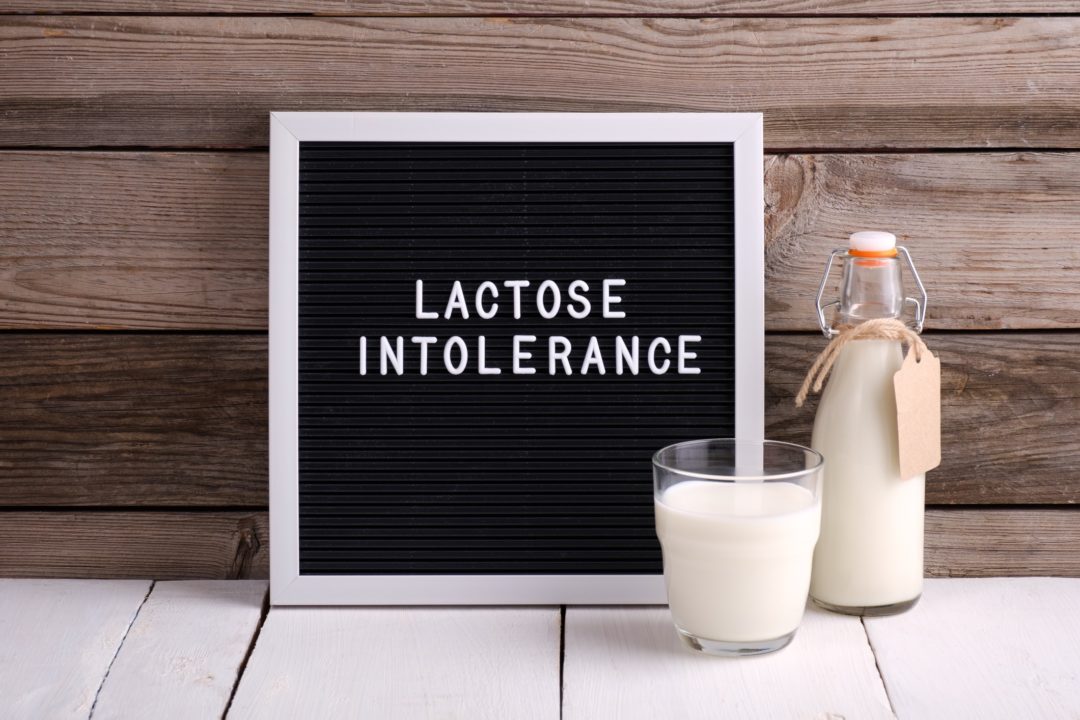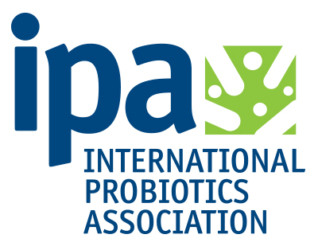Estimated to affect two-thirds of the world's population, lactose intolerance (LI) can impact health by limiting nutrient-rich food sources such as milk and milk products. Avoidance of lactose-laden foods and supplementation with lactase enzymes to digest lactose (milk sugar) are the primary management tools; nevertheless, results can be variable.
In recent years, probiotics and prebiotics have attracted substantial attention because of their potential to promote lactose digestion and decrease gastrointestinal symptoms.
This blog will briefly summarize the research in this regard.
Lactose intolerance, an overview
The enzyme lactase (also known as β-Galactosidase) cleaves the disaccharide lactose (the main carbohydrate in milk of humans and most other mammals) to produce galactose and glucose. Reduced lactase activity in the small bowel leads to microbial fermentation of undigested lactose. Bacterial fermentation of lactose results in the production of gasses that have effects on GI function. Gastrointestinal symptoms can ensue: bloating, flatulence, diarrhea, vomiting, and abdominal pain.
Notably, not everyone with lactose malabsorption has digestive symptoms after lactose ingestion; the risk depends on lactase expression, lactose dose, and the gut microbiome. If symptoms occur after ingestion of lactose, it is termed LI.
Causes of lactase deficiency can be primary, secondary, or congenital.
- Primary: The majority of cases involve a progressive decline in lactase activity, which is the normal situation for all adult mammals and in humans, most common in African, Asian, and South American countries. People whose families are from these countries are more likely to have lactose malabsorption. In northern Europe, lactose malabsorption is much less problematic because many people retain the ability to digest lactose due to a gene mutation.
- Secondary: Infections, surgery, and diseases such as celiac disease and Crohn's may lead to loss of lactase activity.
- Congenital: A total absence of lactase activity (though rare) because of gene variants may be exhibited in an infant after the introduction of milk.
Diagnosis
Management
Reducing or eliminating dairy products (with variable amounts of lactose) is one step in management. Fortunately, milk products with lactose removed are widely available. In addition, lactase tablets may provide relief (not a sure thing) when supplemented before ingesting lactose milk products.
Because they contain less lactose, yogurt and cheese may be better tolerated. Fresh yogurt is associated with better symptom relief than pasteurized yogurt. Bacteria in yogurt are well-known β-galactosidase producers.
Consequences
Dairy products are primary sources of calcium, potassium, protein, and vitamins B and D; therefore, avoidance can increase the risk of bone fracture, osteoporosis, and nutrient deficiencies.
Probiotics and prebiotics in lactose intolerance
Specific strains of Lactobacillus, Bifidobacterium, and Streptococcus thermophilus are known to have high β-galactosidase activity, suggesting a strong potential to assist in lactose digestion and ameliorate symptoms of LI. Several recent reviews have looked at the research.
- A 2018 systematic review of studies with eight probiotic strains found "an overall positive relationship between probiotics and lactose intolerance."
- A later review encompassing a final nine studies reported that probiotic supplementation improved hydrogen breath test results and symptoms of LI. Most of the probiotics administered (including L. acidophilus, L. reuteri, L. rhamnosus, L. bulgaricus, S. thermophilus, and B. longum) effectively mitigated clinical signs. The dose and duration of probiotic treatment, as well as the age of participants, were observed to be critical to outcomes. As assessed in one study, prebiotic supplementation had a "beneficial effect on clinical signs of LI but not on HBT results."
- A 2022 review that ultimately included only 5 of 830 studies concluded that L.reuteri and L. acidophilus strains showed the best results in managing LI symptoms.
Mechanisms
Researchers suggest that the beneficial effect of probiotics in LI may be elucidated by several mechanisms:
- Depending on the strain, probiotics may provide lactase for digestion in the intestinal tract.
- Second, probiotics may compete against gas-producing bacteria and exert beneficial effects such as metabolite production and altered gut wall permeability.
- Furthermore, certain prebiotics may ameliorate LI symptoms by increasing beneficial gut bacteria, although the mechanisms are unclear.
Takeaway
LI affects large swaths of the global population. Restriction of lactose-containing foods and use of lactase as enzymes are first-line treatments, but symptoms can persist. Yogurt is, in fact, the only "probiotic" that has received a positive opinion from the European Food Safety Authority (EFSA) for improving lactose digestion. However, studies indicate that specific strains of probiotics administered in adequate doses and durations may also improve lactose tolerance and quality of life. More research should be conducted to determine the persistence of positive probiotic effects. Certain prebiotics, too, may be helpful though the evidence is slim and inconclusive.
Key references
Di Costanzo, Margherita, and Roberto Berni Canani. "Lactose Intolerance: Common Misunderstandings." Annals of Nutrition & Metabolism vol. 73 Suppl 4 (2018): 30-37. doi:10.1159/000493669
Fassio, Filippo et al. "Lactose Maldigestion, Malabsorption, and Intolerance: A Comprehensive Review with a Focus on Current Management and Future Perspectives." Nutrients vol. 10,11 1599. 1 Nov. 2018, doi:10.3390/nu10111599
Ibba, Ivan et al. "Effects of exogenous lactase administration on hydrogen breath excretion and intestinal symptoms in patients presenting lactose malabsorption and intolerance." BioMed Research International vol. 2014 (2014): 680196. doi:10.1155/2014/680196
Leis, Rosaura et al. "Effects of Prebiotic and Probiotic Supplementation on Lactase Deficiency and Lactose Intolerance: A Systematic Review of Controlled Trials." Nutrients vol. 12,5 1487. 20 May. 2020, doi:10.3390/nu12051487
Misselwitz, Benjamin et al. "Update on lactose malabsorption and intolerance: pathogenesis, diagnosis and clinical management." Gut vol. 68,11 (2019): 2080-2091. doi:10.1136/gutjnl-2019-318404
Oak, Sophia J, and Rajesh Jha. "The effects of probiotics in lactose intolerance: A systematic review." Critical Reviews in Food Science and Nutrition vol. 59,11 (2019): 1675-1683. doi:10.1080/10408398.2018.1425977
Oliveira, Luiza Scalcon de et al. "The use of probiotics and prebiotics can enable the ingestion of dairy products by lactose intolerant individuals." Clinical Nutrition (Edinburgh, Scotland) vol. 41,12 (2022): 2644-2650. doi:10.1016/j.clnu.2022.10.003
Savaiano, Dennis A et al. "Improving lactose digestion and symptoms of lactose intolerance with a novel galacto-oligosaccharide (RP-G28): a randomized, double-blind clinical trial." Nutrition journal vol. 12 160. 13 Dec. 2013, doi:10.1186/1475-2891-12-160
Storhaug, Christian Løvold et al. "Country, regional, and global estimates for lactose malabsorption in adults: a systematic review and meta-analysis." The Lancet. Gastroenterology & hepatology vol. 2,10 (2017): 738-746. doi:10.1016/S2468-1253(17)30154-1
Authorship
The International Probiotics Association (IPA) is a global non-profit organization bringing together, through its membership, the probiotic sector's stakeholders, including but not limited to academia, scientists, healthcare professionals, consumers, industry, and regulators. The IPA's mission is to promote the safe and efficacious use of probiotics worldwide. Holding NGO status before Codex Alimentarius, the IPA is also recognized as the unified "Global Voice of Probiotics" around the world.
Clare Fleishman, MS RDN, bridges the gap between science and health across most platforms: major newspapers, magazines, books (Globesity), workshops, social media, and websites. In 2010, she launched www.ProbioticsNow.com to share the cascade of new discoveries in the microbiome. Always amazed at this "forgotten organ," Fleishman also creates white papers, blogs, videos, and social media for the International Probiotics Association. She recently published Fertility: Why Microbes, Weight & Nutrition Matter.
IPA disclaimer: Probiotics have different characteristics, qualities and actions that are unique to the specific strain or combinations. The label should identify the genus, species and strain for each microorganism in the product (i.e. Lactobacillus acidophilus IPA001). If a claim pertaining to individual strains or a blend of strains contained in the product is made, the manufacturer should maintain evidence that the amount(s) provided in the product is consistent with the scientific evidence in support of the claim.










